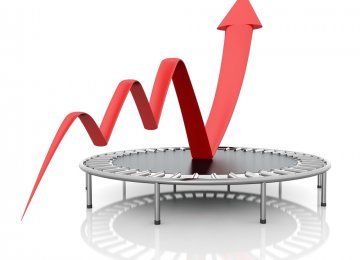
The current rebound is one for the history books, shocking everyone but me.
I’ve been saying for a little while now that this current upswing (or boom – may as well call it what it is), is just getting started, and has about 5 or 6 years left to run.
And it seems like everyday now another economics team comes round to my point of view.
So, you know, I was calling it before it was cool. Remember that. When they ask you, who’s the coolest economist in the country, you tell them its Dymphna Boholt.
Anyway, the latest team to see the light is the team at CBA. Their economists are now locking in strong price gains through to 2020, admitting they had been taken off-guard by the “phenomenal” rebound in demand:
Australian capital city dwelling prices, led by Sydney and Melbourne, have risen sharply since mid-2019. RBA rate cuts, coupled with extra borrowing capacity from the APRA induced changes to loan serviceability assessment and a surprise election outcome that removed some taxation risks around housing caused home buyer interest return in force.
Back in July we updated our dwelling price forecasts and extended the profile to end-2020. Our assessment at the time was that after a national peak-to-trough fall of 10%, prices would rise modestly over H2 2019 and 2020. We flagged that the risks to our forecast profile were to the upside, but a V-shaped recovery was not our central scenario….
…History, however, will show that the rebound in demand has been phenomenal, particularly in Sydney and Melbourne. Auction clearance rates are high, the flow of credit has picked up markedly and both house price expectations and home buyer intentions have spiked. It looks like an element of FOMO (fear-of-missing-out) has returned to the market! As a result, our original price targets have been achieved sooner than expected…

CBA have identified two key drivers behind this ‘phenomenal’ rebound: the flow of credit, and the constraints on housing supply.
First they note that credit is expanding much more quickly than expected. Importantly, they note that this hasn’t been driven by easier credit conditions, but by a surge in credit demand.
New lending is driven by the supply and demand for credit. The latest ABS lending data indicates that the flow of housing credit has picked up materially over the past four months. Indeed over the four months to September it grew at an annualised pace of 52%! It has been a broad-based increase across investors and owner-occupiers (including first home buyers).

… there has been a sharp lift in the demand for credit which is being reflected in a big lift in monthly lending. This trend is set to continue based on the leading indicators of momentum. We believe that the single biggest factor driving the lift in demand is the cumulative 75bps of RBA interest rate cuts since June which have resulted in a fall in mortgage rates to both owner-occupiers and investors.
They also note that any over-supply in the housing market has been unwound, and we are moving back towards a shortage of housing.
Population growth remains strong in Australia. In the year to Q3 2019 (latest available), Australia’s population grew by 1.6% (i.e. 389k). Net overseas migration accounted for 64% of that increase (chart 9). A high population growth rate means that residential construction must run at elevated levels or else a housing shortage will manifest itself.
Residential construction is presently in decline, which means that growth in new construction as a share of the population is falling. On our calculations the decline in residential construction is taking place at a time when the excess supply of dwellings is relatively small (chart 10). This means that it won’t be long until the excess supply has been eroded. Our estimates point to an undersupply of housing from late-2020 (see here). In time this should put downward pressure on vacancy rates and upward pressure on rents and dwelling prices.

Yup.
And put that all together and you have all the ingredients for a robust boom ahead. And when they put it into their fancy model, the results are, unsurprisingly, strong. CBA are now looking for national price growth to get back to around 6% next year, with momentum likely to take price growth into the double digits in late 2020, early 2021.

There’s absolutely nothing in here that surprises me, but it’s nice to see their fancy models land on the side of good common sense.
Remember: Me. Coolest economist ever.
DB